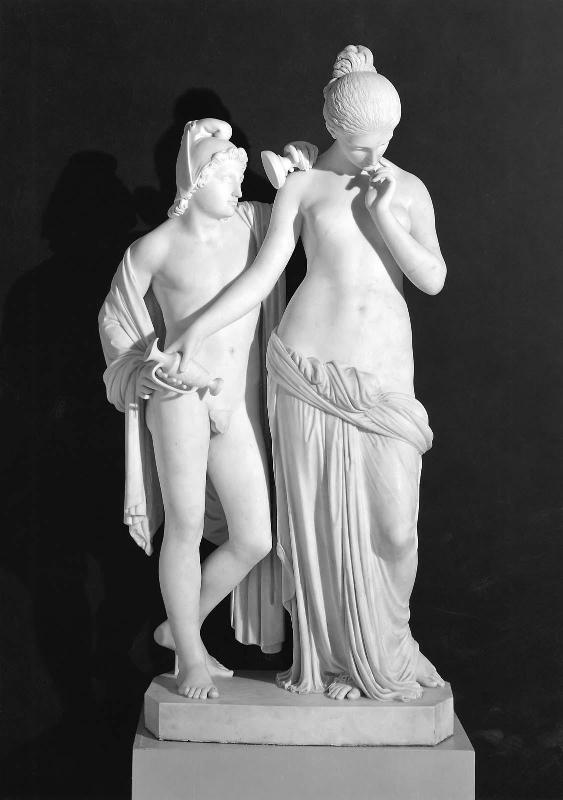Hebe and Ganymede
Thomas Crawford
(American, about 1813–1857)
about 1851; modeled 1842
Object PlaceRome, Italy
Medium/TechniqueMarble
DimensionsOverall: 175.3 x 81.3 x 52.1 cm, 1088.6 kg (69 x 32 x 20 1/2 in., 2400 lb.)
Mount (Rolling steel pedestal with 3/4" thick painted plywood skirts): 78.7 x 99.1 x 114.3 cm (31 x 39 x 45 in.)
Mount (Rear locking-soft rubber wheels ): 12.7 x 6.4 cm (5 x 2 1/2 in.)
Mount (Rolling steel pedestal with 3/4" thick painted plywood skirts): 78.7 x 99.1 x 114.3 cm (31 x 39 x 45 in.)
Mount (Rear locking-soft rubber wheels ): 12.7 x 6.4 cm (5 x 2 1/2 in.)
Credit LineGift of Charles C. Perkins
Accession number76.702
On View
On viewClassificationsSculpture
Collections
Crawford was described as "the most modern and the most Greek of sculptors." Here, he represented Hebe, cupbearer to the gods, relinquishing her office. She passes a pitcher (in the form of a Greek lekythos) to her successor, the shepherd Ganymede, who already holds her cup. Crawford's studio in Rome was an important gathering place for American artists and patrons, including Boston's Charles Callahan Perkins, who commissioned this work, in 1844. In 1855 it was displayed at the Boston Athenaeum, and in 1876 it became one of the first American works acquired by the Museum of Fine Arts.
ProvenanceCharles C. Perkins, Boston
Thomas Crawford











